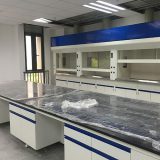Open a small hole above the compression chamber of the oil sealing mechanical vacuum pump and install the sanitary regulating valve. When we open the regulating valve and adjust the amount of intake air, rotor rotates to a certain position, the air will pass through the hole into the compression chamber to reduce the compression ratio so that most of the steam does not condense and is excluded from the pump along with the incoming gas. And the valve that plays such a role is called gas ballast valve.
Gas ballast valve can accelerate the extraction of steam and won’t pollute the oil substance. If vacuum pump only pumps out permanent gas, and the gas isn’t liquefied due to the increase in pressure, then it doesn’t matter whether the pump oil deteriorates or not. But if you want to use this pump to do vacuum drying or pump out wet air, then the gas contains not only permanent gas but also vapor. If we use pump that is without a gas ballast valve to pump out this portion of vapor, the vapor will dissolve in the oil due to liquefaction, so the vacuum properties of the oil will be degraded, reducing the pumping speed and degree of vacuum of the pump.

